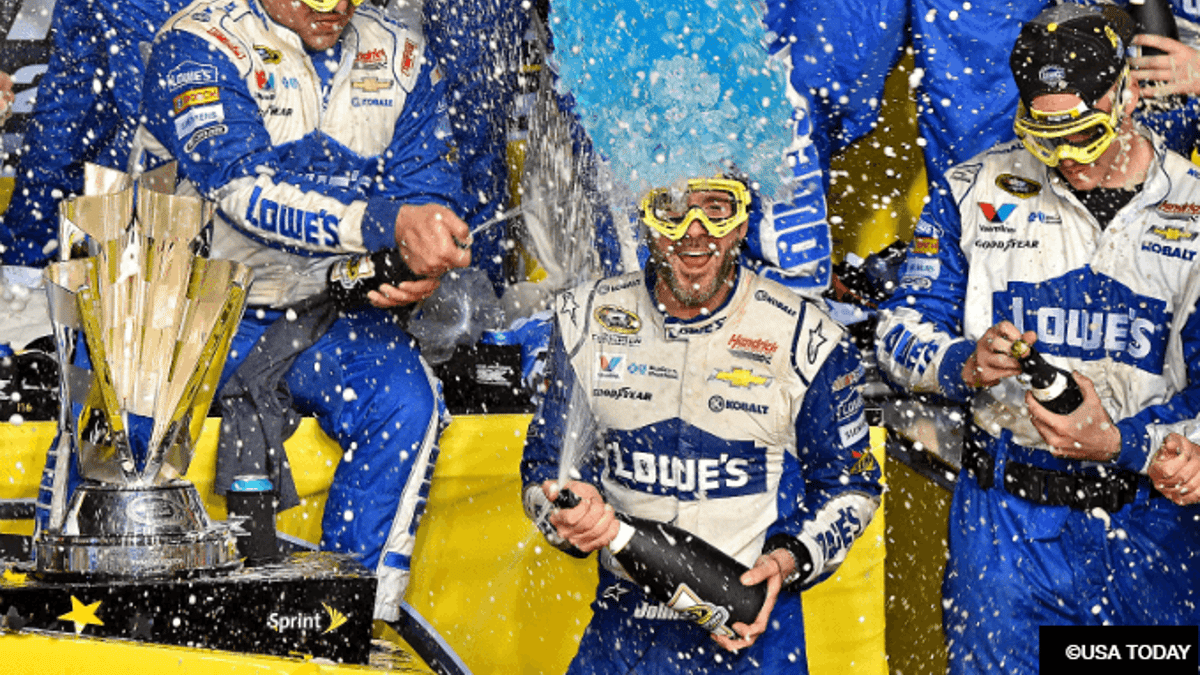NASCAR Cup Series Champion Betting Tips: 5 Keys to Consider

There are a number of common threads to keep in mind when taking part in NASCAR Cup Series champion betting . While the format to crown a champ has changed a number of times even over the last decade, similar trends can be applied when breaking down the championship contenders.
As a quick refresher course, since 2014 NASCAR has implemented a format that breaks the year into 26 regular season races and then a ten race Playoff to decide the title. A total of 16 drivers qualifying for the post season with four eliminated in each of the opening four race rounds based on point totals.
A win automatically gets you both into the post season and also moves drivers to the next round of Playoffs if they find Victory Lane. The three rounds boil down to the four eligible drivers after the third round that move on to the last race of the season.
The race within a race is between that quartet with the highest finisher among the group claiming the crown.
As drivers navigate the gauntlet of the grueling season, three keys have historically led to winning the championship:
Wins
The driver with the most wins over the course of the full season isn’t automatically the champ. However winning as they say is the best avenue for success. Dating back to the 2010 season, championship driver win totals have been impressive. Joey Logano’s 2018 title saw him win three times, the lowest number over the decade. The average over the other nine years in the period is just under five victories.
A win early in the regular season brings an automatic Playoff berth and allows teams to alleviate a great deal of pressure. Victories during the Playoff rounds carries advancement and provides opportunities to teams to try different set-ups or nuances to their cars to improve performance. The bottom line is drivers capable of multiple win seasons while not a lock, still are the best bets on betting sites to win the title.
Consistency
Equally important is staying and finishing near the front of the field on a regular basis. Points are distributed to the top-10 finishes at the end of the two stages inside a race that lead up to the final leg to the checkered flag. Racking up those valuable markers is a vital safety net for drivers who don’t win.
Six of the last ten champions have put more than 20 top-10 finishes in the books with high water marks in 2017 and 2018 when Martin Truex Jr. and Logano scored 26 each year.
Every position on the track counts for a point and what might seem like a meaningless eleventh place finish in June could come back to haunt a driver later on in the Playoff picture. Tony Stewart’s 2011 championship over Carl Edwards came on a tiebreaker because the duo was tied in the point standings. But Stewart had more wins than Edwards, which was the deciding factor. But had Edwards just garnered one additional position and/or point during the season he would have won the crown.
Durability
There’s an old adage in racing that “to finish first, you must first finish.” A driver with multiple DNFs (did not finish) marks next to his name will most often not be someone in championship contention.
While mechanical failures are more rare than ever in today’s NASCAR because of engine reliability and the resilience in cars’ construction, there are still ways to not finish a race. Accidents top the list, which is not always the fault of a driver eliminated from competition. But the ability to make good decisions and stay out of situations that could easily turn into contact then leading to a wreck is paramount.
Betting on veterans and their wealth of experience is a vital element in this department when it comes to most motorsport betting . The propensity of accidents over the last ten seasons has come at various ends of the schedule spectrum; the three shortest tracks on the slate (Martinsville, Bristol and Richmond) and the two largest (Daytona and Talladega).
The tight quarters of short track racing produce much closer racing and increased potential for contact and damage. Conversely the high speed restrictor plate racing on the two mammoth speedways are breeding grounds for what’s knows as “The Big One,” a multi-car accident that breaks out when one driver breaks lose and triggers a chain reaction wreck of cars racing in close proximity to one another.
Drivers with high average finishes at both disciplines of tracks are better positioned to remain in the championship chase. For instance, 2015 champion Kevin Harvick has a career average finish of 13.21 at Bristol and 15.47 at Talladega, both which place him in the top five over the last ten seasons.
Stay In The Loop With Industry News, Insider Tips & More!
Live Betting. News and Industry Updates. Sent Weekly.







